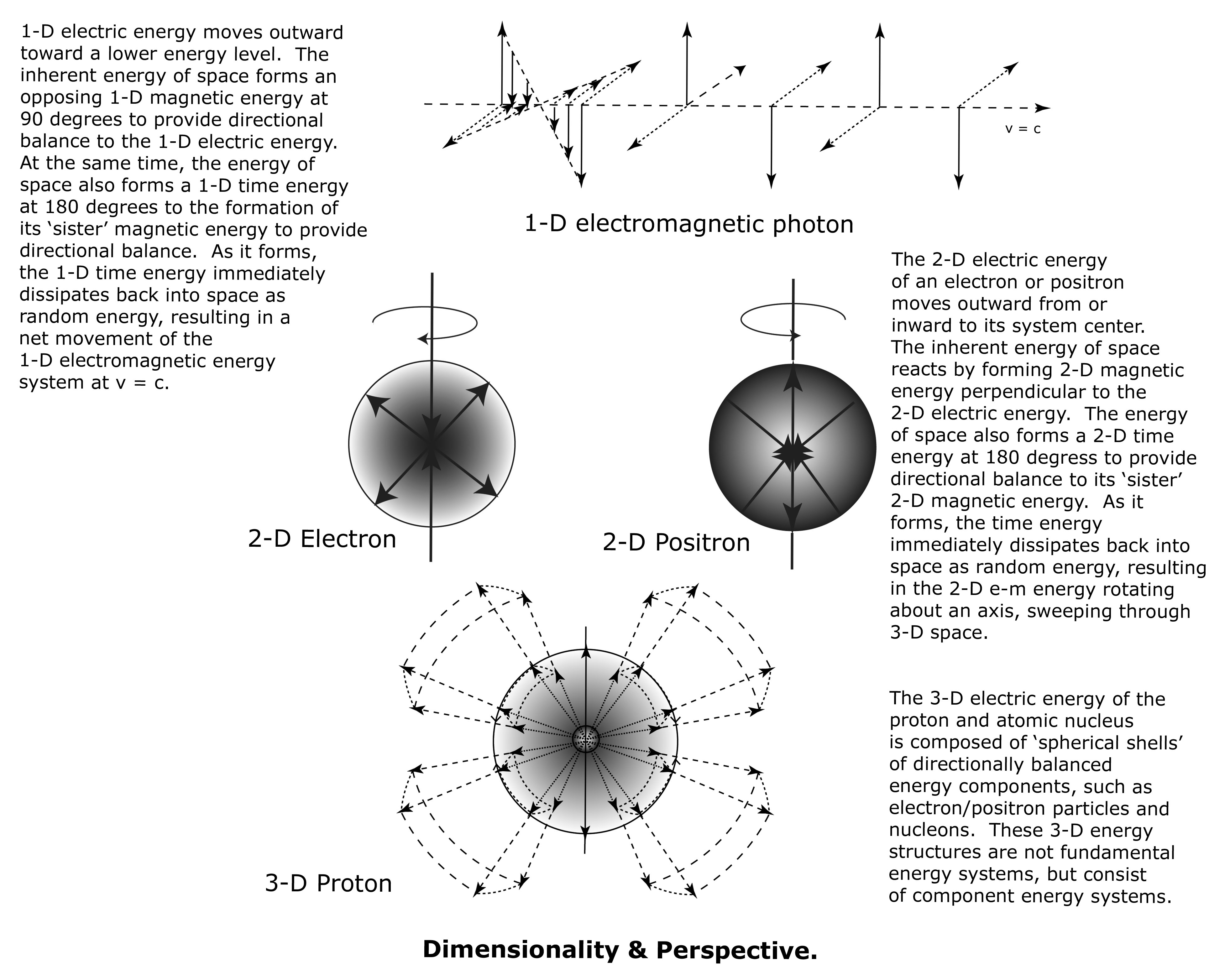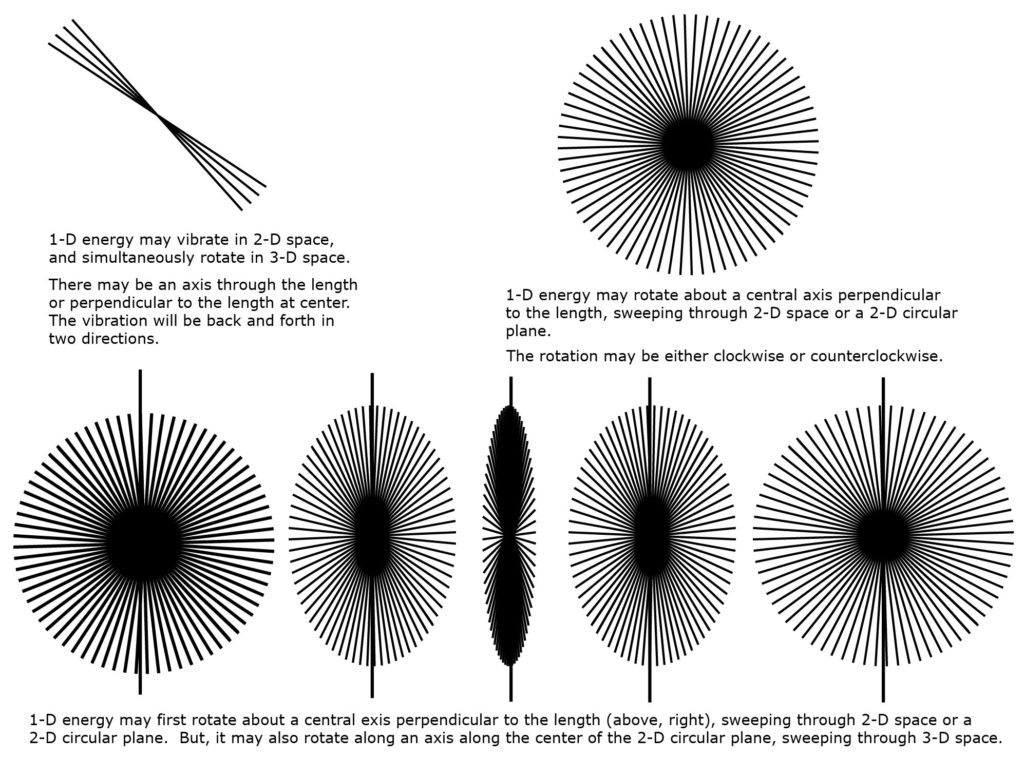![]()
 The inherent energy of space is not electromagnetic in nature. Instead it is composed of basic 1-D bidirectional units of energy in constant random motion and distribution relative to each other, creating a directionally balanced energy system in dynamic equilibrium. Instead of electromagnetic interactions, the energy of space is driven by randomness and nonrandomness, by disorder and order, by directional imbalance and directional balance.
The inherent energy of space is not electromagnetic in nature. Instead it is composed of basic 1-D bidirectional units of energy in constant random motion and distribution relative to each other, creating a directionally balanced energy system in dynamic equilibrium. Instead of electromagnetic interactions, the energy of space is driven by randomness and nonrandomness, by disorder and order, by directional imbalance and directional balance.
The basic 1-D units of energy of space randomly cross paths, forming networks of 2-D and 3-D space.
In addition, nonrandom 1-D energy of space may become 1-D unidirectional energy that occupies first 1-D space, then as it vibrates about its central point, it may sweep through 2-D space (e.g., along a 2-D plane). Then this 2-D plane may rotate about a 1-D axis, sweeping 3-D space. Each of these ‘displacements’ of 1-D, 2-D, and 3-D space may produce elementary particles with unique ‘unidirectional’ properties. See illustration below.
The inherent energy of space produces 1-D, 2-D, and 3-D energy to provide directional balance to nonrandom, unidirectional energy (i.e., electric energy). For example, the energy of space produces 1-D magnetic and 1-D time energies to provide directional balance to the 1-D electric energy of a photon.
‘Distance’ is an odd property of the inherent energy of space. This is because the inherent energy of space is random, and so within the energy of space itself, there is no ‘reference point’ for ‘distance.’
However, when unidirectional (i.e., electric) energy exists within the inherent energy of space, distance becomes a meaningful property. Electric energy moves toward a lower energy level. Adjacent energy of space forms an equal and opposing magnetic energy at 90 degrees to provide directional balance to the electric energy. As the magnetic energy forms, the energy of space simultaneously forms ‘time’ energy at 180 degrees to the magnetic energy to provide directional balance. The ‘time energy’ immediately dissipates back into the random energy of space as it forms, resulting in a net displacement of space by the e-m energy system (at v = c).
‘Distance’ becomes meaningful when comparing the relative positions of two or more electromagnetic energy systems. In other words, distance can only be observed as a dimensional property when observed as a measurement of position between two or more electromagnetic energy systems. It is not a dimensional property of the inherent energy of space.

